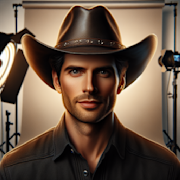The Rise of Method Acting: Brando, Dean, and the Revolution in Classic Cinema

The golden age of classic cinema is heralded by the legendary performances of actors like Marlon Brando and James Dean. These iconic figures revolutionized the art of acting through their adoption of method acting, a technique that brings raw and authentic emotions to the screen. In this blog post, we will delve into the rise of method acting and explore how Brando and Dean forever changed the landscape of cinema.
1. The Birth of Method Acting
1.1 The Stanislavski Influence
Method acting finds its roots in the renowned Russian theatre practitioner, Konstantin Stanislavski. In the early 20th century, Stanislavski developed a system of acting that encouraged actors to draw upon their own personal emotions and experiences to create a more realistic performance. This revolutionary approach focused on psychological realism, unveiling a new era in theatrical acting.
1.2 The Group Theatre
In the 1930s, the Group Theatre, a New York-based ensemble, embraced Stanislavski’s teachings and popularized method acting in the United States. Led by Lee Strasberg, the Group Theatre emphasized a deep exploration of character and intense emotional preparation. Stella Adler and Sanford Meisner, among others, were influential members of this acclaimed theater company.
2. Marlon Brando: The Method’s Ultimate Icon
Marlon Brando’s career skyrocketed with his portrayal of Stanley Kowalski in the 1951 film adaptation of Tennessee Williams’ play, “A Streetcar Named Desire.” Brando’s captivating performance personified the essence of method acting, leaving an indelible mark on the industry.
2.1 Brando’s Immersion
Brando’s approach to his craft was distinctly different from the traditional acting methods of the time. He immersed himself in the character’s world, conducting extensive research and observing people who embodied the traits he sought to portray. By submerging himself into the character’s mindset, Brando brought an unmatched authenticity to his roles.
2.2 The Power of Emotions
One of Brando’s most significant contributions to method acting was his ability to access deeply rooted emotions and bring them to the surface. By channeling his personal experiences and vulnerabilities, Brando created performances that resonated with audiences on a profound level. His raw, unpredictable, and emotionally charged acting style redefined what was possible on screen.
2.3 Undeniable Impact
Brando’s performances in films like “On the Waterfront” (1954) and “The Godfather” (1972) solidified his status as an acting pioneer. He liberated actors from the constraints of polished theatricality, offering the world a new form of cinema that embraced imperfections and highlighted the complexities of human behavior.
3. James Dean: The Method’s Tragic Hero
Just as Marlon Brando pushed the boundaries, James Dean emerged as an iconic figure in method acting, captivating audiences with his brooding intensity and rebellious nature.
3.1 A Short-lived Legacy
Tragically, Dean’s life was cut short when he died in a car accident at the young age of 24, having starred in only three major films - “East of Eden” (1955), “Rebel Without a Cause” (1955), and “Giant” (1956). However, his impact on method acting and popular culture, surpassing his brief time in the limelight, remains undeniably significant.
3.2 A New Era of Authenticity
Dean’s portrayal of troubled, angsty characters resonated deeply with the younger generation. He epitomized the disillusionment and rebellion of post-war youth, showcasing a sense of vulnerability and emotional complexity that was fresh and unheard of at the time. Dean’s naturalistic acting style liberated actors from the constraints of theatricality, allowing them to explore uncharted depths of authenticity.
4. Legacy and Evolution of Method Acting
4.1 The Spread of Method Acting
Brando and Dean’s pioneering efforts paved the way for a new generation of actors who embraced method acting. Actors like Al Pacino, Robert De Niro, and Meryl Streep studied under Lee Strasberg and further honed the craft of method acting, carrying on the legacy of their predecessors.
4.2 Impact on Modern Cinema
Method acting’s impact is felt even in contemporary cinema. By delving deep into character psychology and emphasizing emotional truth, method actors continue to redefine the boundaries of performance. Their dedication to authenticity, paired with the influence of Stanislavski’s teachings, has forever altered the landscape of acting, breathing life and complexity into every character.
5. Conclusion
Method acting, spearheaded by the likes of Marlon Brando and James Dean, ushered in a revolution in classic cinema. Their unyielding commitment to psychological realism and emotional depth paved the way for a new breed of actors. With their influence still resonating in the present day, method acting remains a powerful force that sets the benchmark for truly transformative performances. As we revisit the timeless films of Brando and Dean, we are reminded of their lasting impact and the lasting legacy of method acting.

Alberto Miller
Movie Fanatic
More From Classics Authority Movies

Movie
Unmasking Classic Film Villains: Evil Never Looked So Good

Movie
Fargo (1996)

Movie
The Departed (2006)

Movie
Intolerance (1916)

Movie
Barry Lyndon (1975)

Movie
Touch of Evil (1958)





